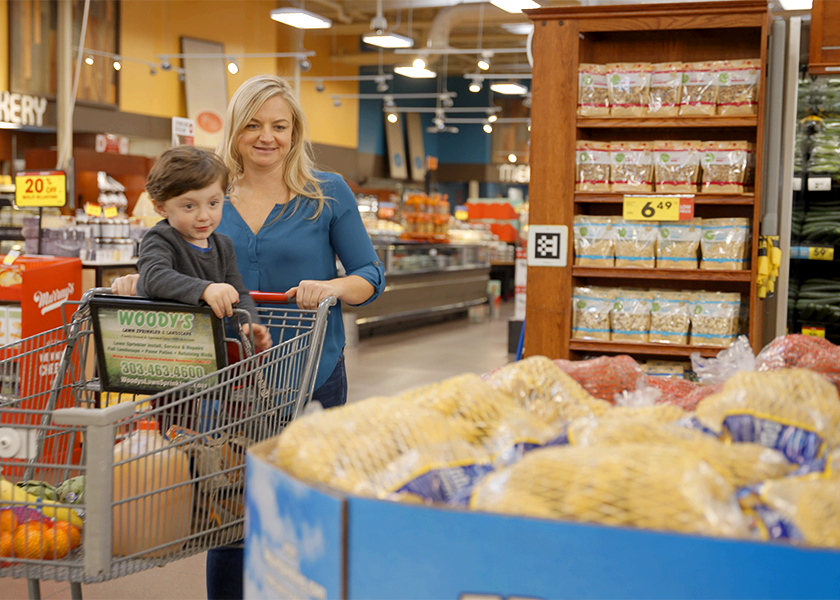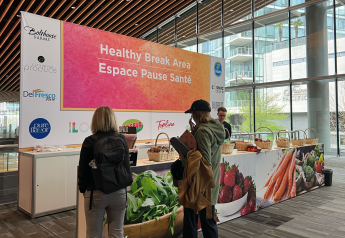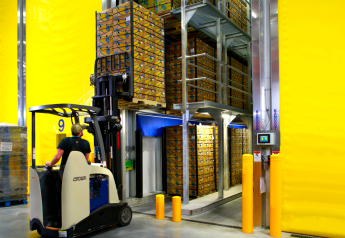Consumers choosing bagged potatoes over bulk, say marketers

Retailers saw a jump in sales of packaged produce about three years ago, when the COVID-19 pandemic erupted and shoppers tried to avoid picking up product that others may have touched.
Now there’s another reason to buy packaged product, especially value-priced potatoes, as consumers struggle to stretch their food dollars and cope with inflation, said Ross Johnson, vice president of retail for the Eagle, Idaho-based Idaho Potato Commission.
Bagged potatoes far outsell bulk product, according to data from Denver-based Potatoes USA. Bags account for 84% of the potatoes sold and have a 76% dollar share, while bulk potatoes make up only 13% of potato sales with a 17% dollar share.
The 5-pound pack size accounts for 51% of potato sales with a 43% dollar share, according to Potatoes USA. The 10-pounders are next with a 24% volume share and a 13% dollar share.
One- to less-than-2-pound packs make up 7% of volume and 22% of dollar share. Two- to 4-pound packs account for 8% of volume sold and 12% of dollar share. Eight-pound packs make up 6% of volume and 5% of dollar share.
Pack sizes greater than 10 pounds account for 4% of volume and 2% of dollar share.
“Having the right types of potatoes and pack sizes on the shelf is the building block for any robust potato set,” said Kayla Vogel, senior global marketing manager for consumer and retail with Potatoes USA.
She recommended that, based on results from top-performing retailers, about two-thirds of fresh potatoes be bags under 10 pounds.
Not long ago, the 10-pound bag was struggling, Johnson said, and some retailers were walking away from them.
“Now some consumers are looking for the value of the 10-pound bag,” he said.
Ten-pounders have an advantage in that they generally are value priced for consumers, and since potatoes have a long shelf life, they don’t have to be eaten right away.
Potato suppliers tend to offer a wide selection of packages.
“We offer the full gamut of industry standard packaging, including all the retail sizes and all the foodservice sizes,” said Eric Beck, marketing director for Wada Farms Marketing Group, Idaho Falls, Idaho.
O.C. Schulz & Sons Inc., Crystal, N.D., recently upgraded its packing line, said Dave Moquist, an owner.
“When everything is up and running, we’ll be able to put out more consumer packs,” he said.
The 5-pound bag is the company’s most popular option, he said. But the firm also can do 3-pounders or almost any size a customer wants.
Moquist said he expects the ability to put up consumer packs to become even more important in the future.
Hall’s, an Edinburg, N.D.-based grower-shipper, packs a variety of 3-, 5- and 10-pound poly bags, said partner Jackson Hall.
“We’ve been doing a little bit more packing recently than we have in the past,” he said.
The company also packs 50-pound bags and cartons, mostly for foodservice, and 2,200-pound totes for repackers.
Retail consumer pack business has been good this year for NoKota Packers Inc., Buxton, N.D., said Mike Rerick, vice president of sales. About 70% of NoKota’s potato volume, which is mostly red Norland potatoes, is made up of consumer packs, he said. “It’s kind of been our main focus here over the years.”
Most of those are 5-pound bags.
Beck said sustainability is a priority at Wada Farms.
“We are in final stages of development of a paper bag, so we can offer a paper bag option instead of a plastic bag,” he said.
The paper bag will be recyclable and compostable, he said.
“You’re definitely seeing more pressure to have packers find sustainable options that are environmentally friendly,” Beck said.
He expects the company’s new bag to be available by the third quarter of 2023.







